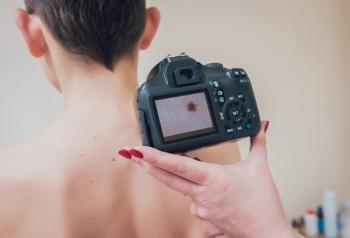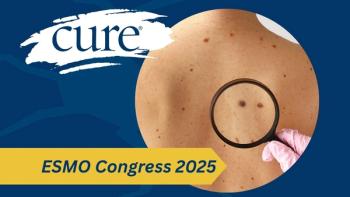
- Summer 2006
- Volume 5
- Issue 2
Picture Not Perfect
A new method of photography used by dermatologist can reveal skin damage, unnoticed by the naked eye.
Monitoring skin changes is the first step in identifying skin cancer, but a new method reveals damage underneath the first layer of the epidermis, unnoticed by the naked eye.
Dermatologists are using ultraviolet (UV) photography to identify sun damage 1.5 to 2 millimeters below the surface of the top layer of skin. It visualizes excess melanin production caused by UV exposure. It can also be a wake-up call to sunbathers. A recent study published in the Archives of Dermatology found that sunscreen use by participants increased dramatically after seeing UV photos of their skin.
Tissue damage, which shows up on the film as uneven dark spots (freckling), identifies where UV rays from the sun or tanning beds have damaged the skin—a precursor to wrinkles, age spots and possible skin cancer. White spots show where pigment cells have been destroyed from UV exposure. Many dermatologists offer UV photography, which costs from $100 to $250 and is not typically covered by insurance.
A different type of photography called total body photography (TBP) records skin changes over time. The entire skin surface is photographed (between 33 and 36 views) using digital or traditional film photography. Because of TBP’s increased sensitivity for identifying new and changed lesions, the technique has decreased the rate of removing stable lesions and lesions that the patient may have mistakenly believed changed in color or shape. However, the method may not track hard-to-spot moles, such as those on the scalp, soles of the feet and between the fingers and toes. TBP is covered by some insurance plans.
To locate a dermatologist, contact the American Academy of Dermatology at 866-503-SKIN or visit
Articles in this issue
almost 17 years ago
Glossaryalmost 17 years ago
Breast Cancer & MDSover 19 years ago
Confronting Deathover 19 years ago
Nonmelanoma Skin Cancer: Saving Your Skinover 19 years ago
Surf & Turfover 19 years ago
A Beautiful Day: The Story of a Son's Lossover 19 years ago
People & Placesover 19 years ago
The Blame Gameover 19 years ago
Running on Emptyover 19 years ago
Fighting Cancer Together




